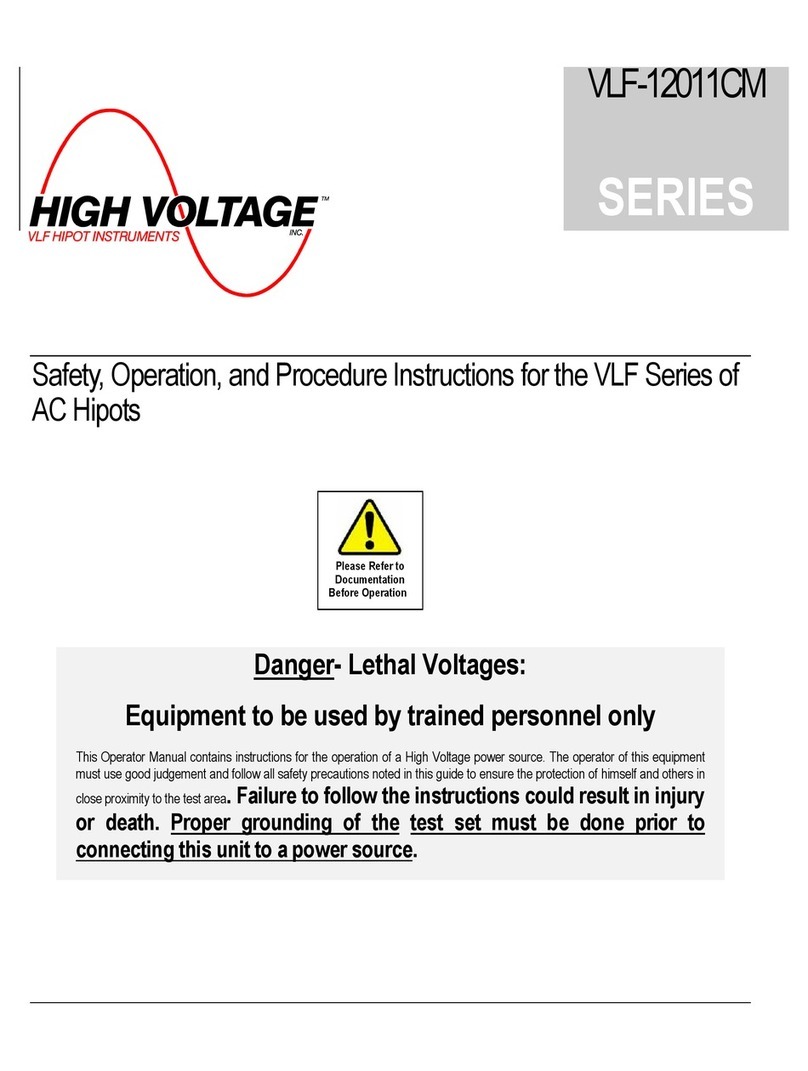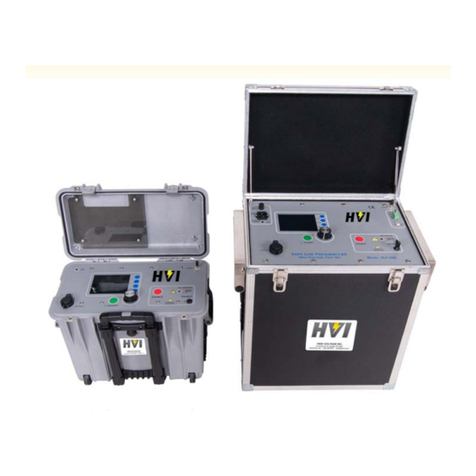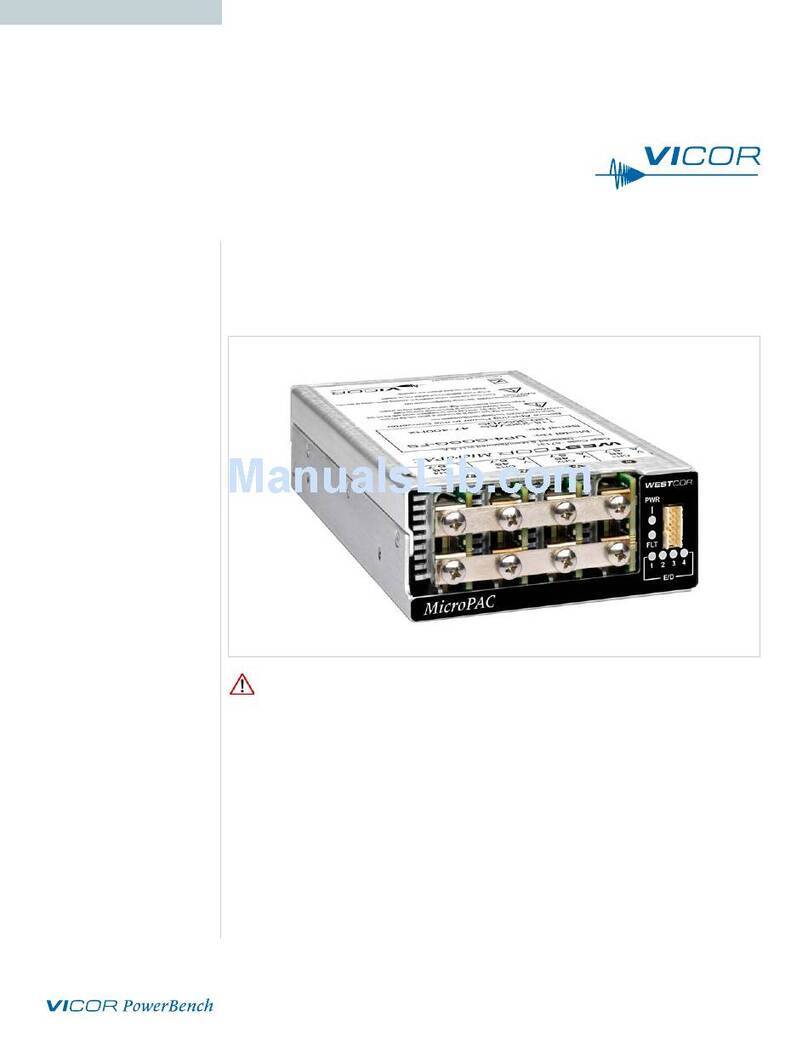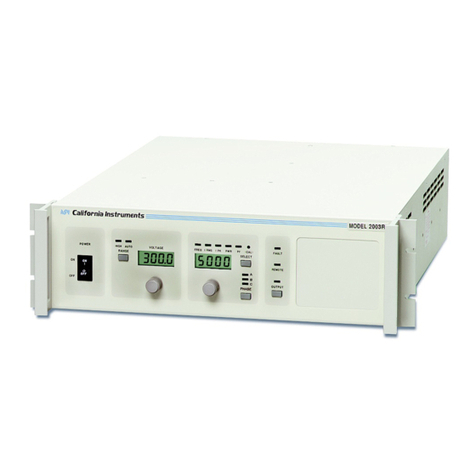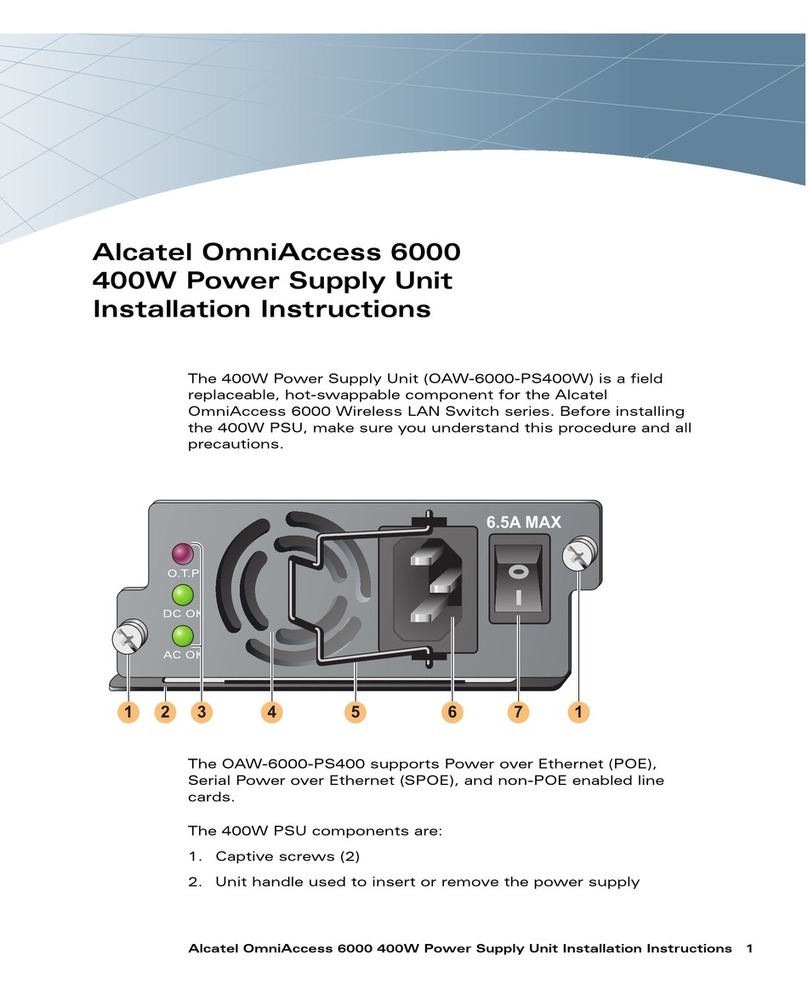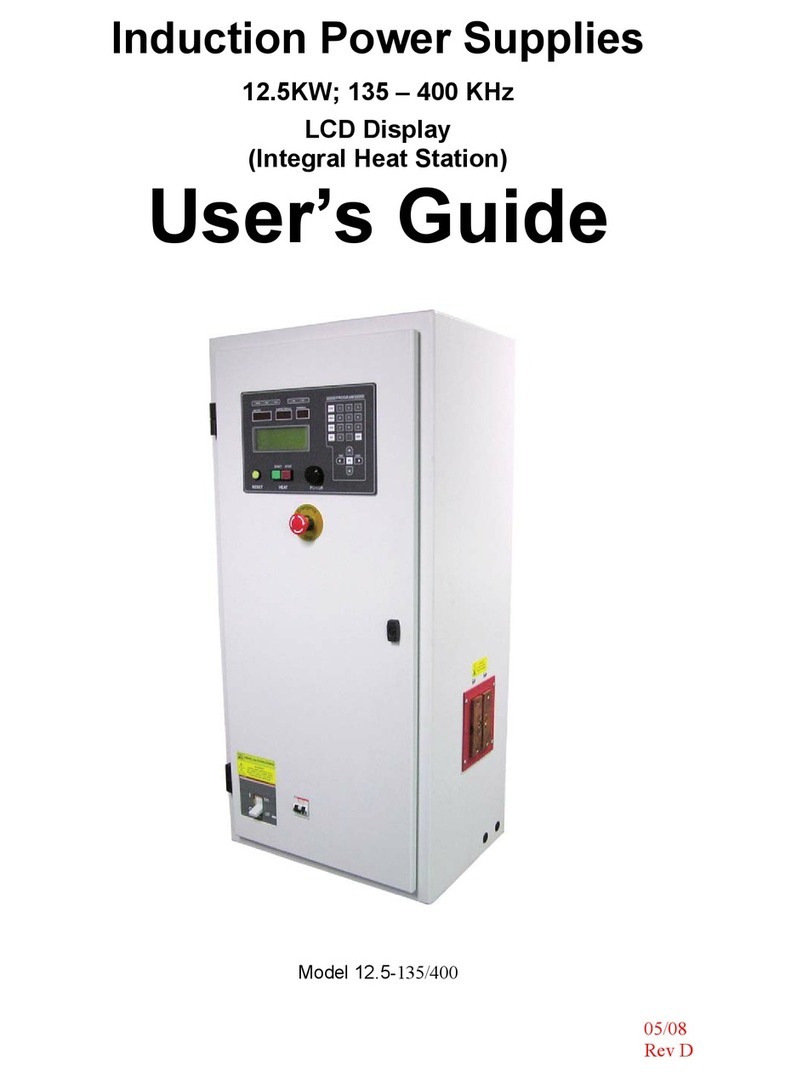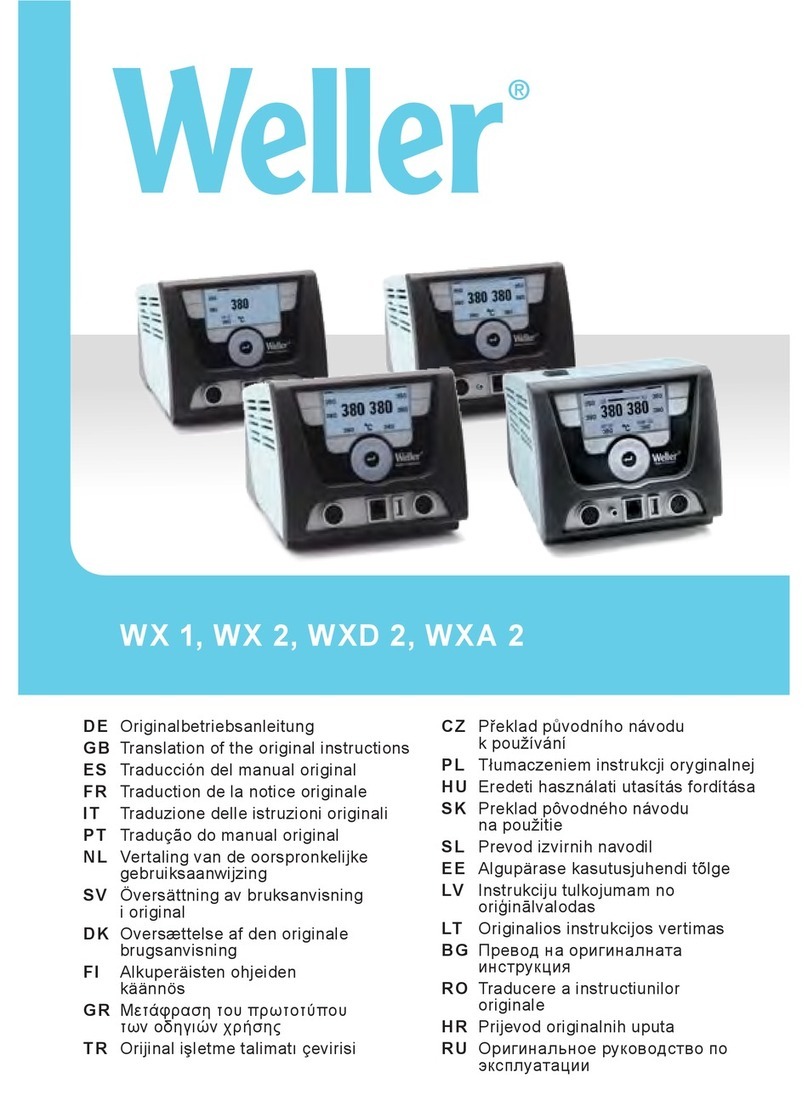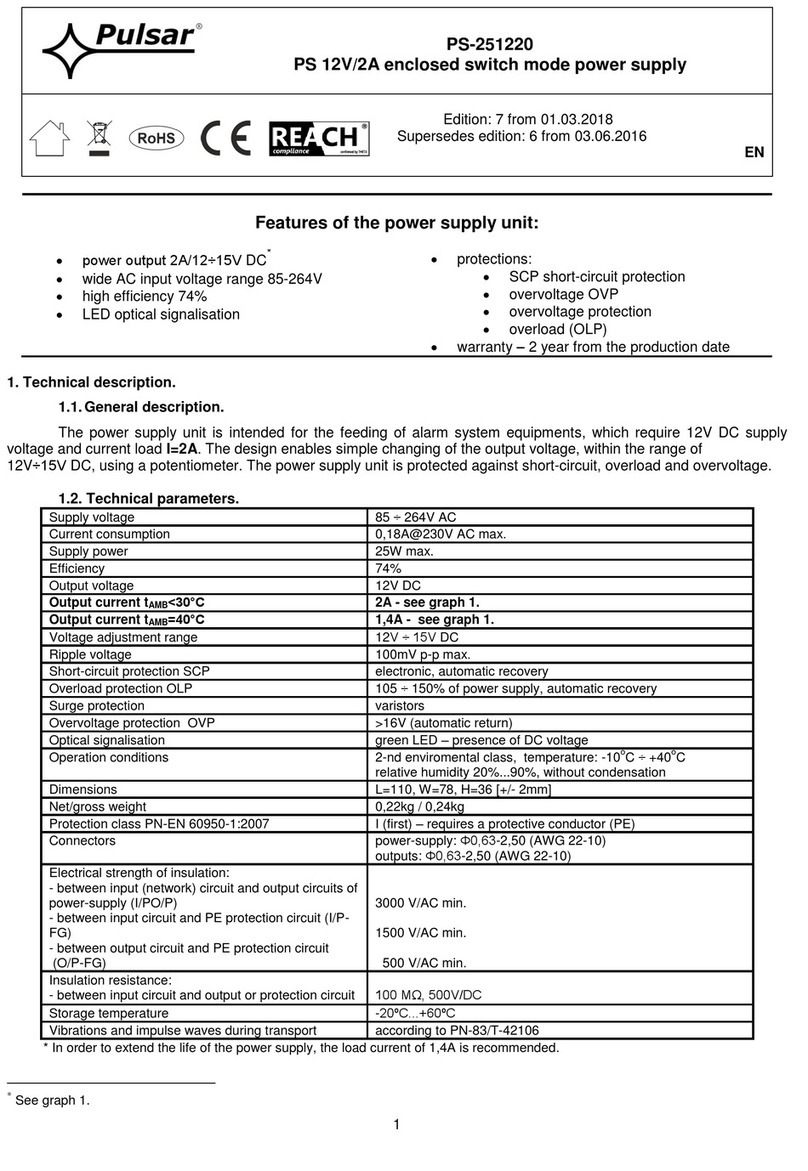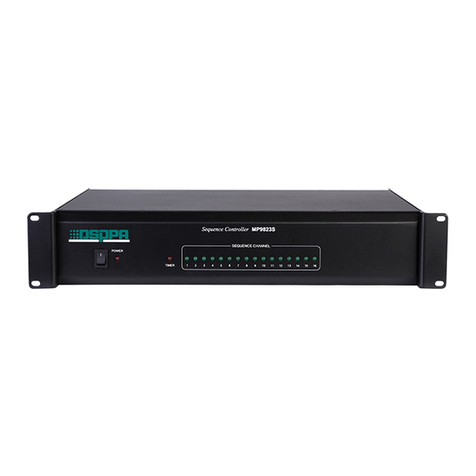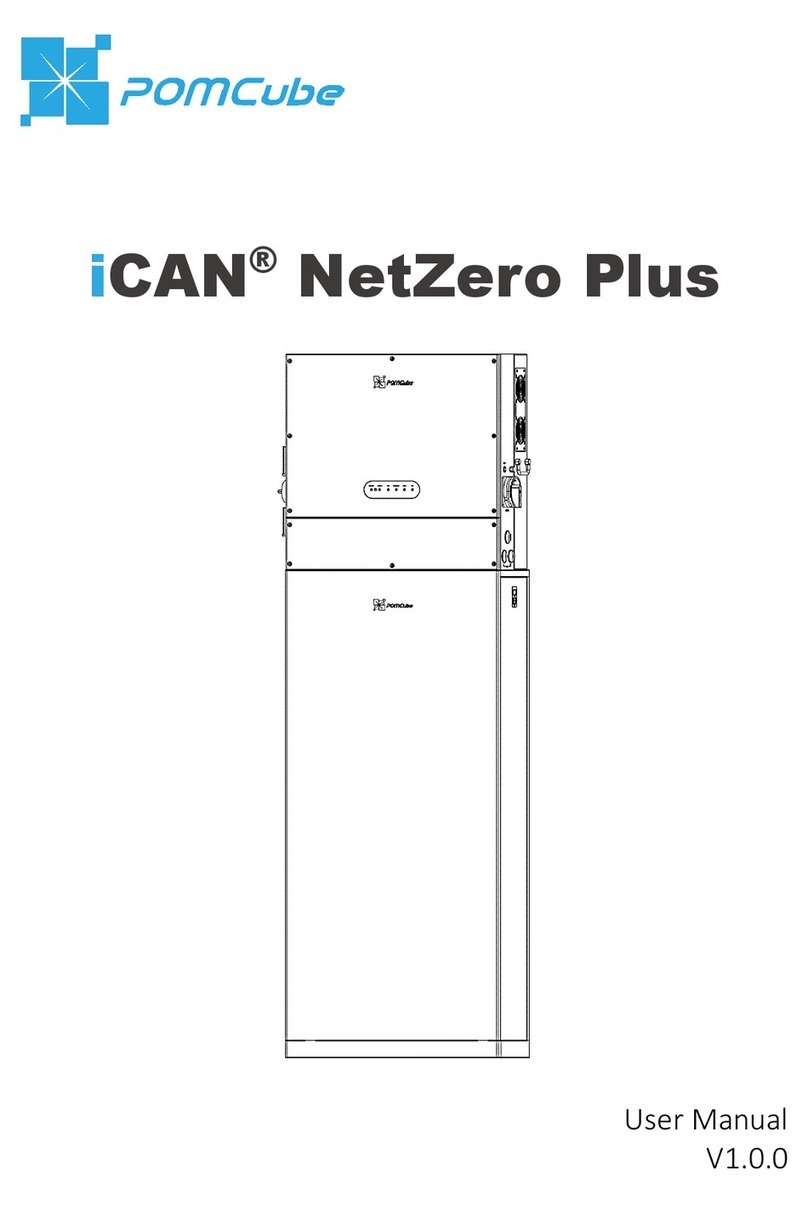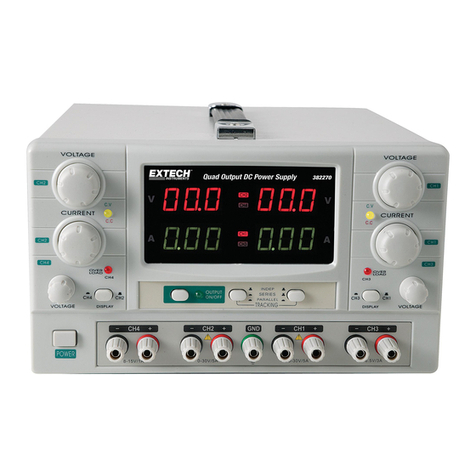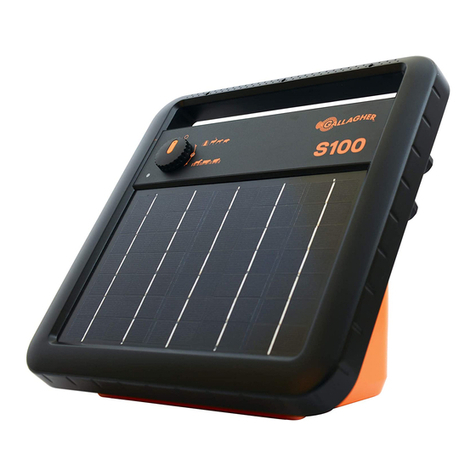High Voltage VLF-CM Series Guide

Safety,Operation,andProcedureInstructionsfortheVLFSeriesof
ACHipots
Danger- Lethal Voltages:
Equipment to be used by trained personnel only
This Operator Manual contains instructions for the operation of a High Voltage power source. The operator of this equipment
must use good judgement and follow all safety precautions noted in this guide to ensure the protection of himself and others in
closeproximitytothetestarea. Failure to follow the instructions could result in injury
or death. Proper grounding of the test set must be done prior to
connecting this unit to a power source.
Min
e
VL
F
-
CM
SERIES
Please Refer to
Documentation
Before Operation

VLFOperatorManual
HIGH VOLTAGE, INC.
31CountyRoute7A
Copake,N.Y.12516
Phone518/329-3275•Fax518/329-3271
http://www.hvinc.com
E-Mail: [email protected]

Last saved 10/5/2016
T:\DOCUMENTS\Manuals\VLF\MANvlf90CMFRf_2k16.doc
Very Low Frequency (VLF) AC High Voltage Testing - Operators Manual Addendum
Instrument Summary
This instrument is a Very Low Frequency AC high voltage test system – a VLF hipot. It is an AC hipot whose frequency
output is 0.1 Hz or lower, compared to the 50/60 Hz of a conventional AC hipot. The lower the frequency, the lower the
current and power it takes to test a capacitive load like a cable. At 0.1Hz, it takes 600 times less current and power,
compared to 60Hz, to apply an AC voltage to a cable or some other high capacitance load.
At 0.1Hz frequency output, one full cycle of the sine wave takes 10 seconds, 20 seconds at 0.05Hz, and 50 seconds at
0.02Hz. Even though each cycle of the waveform can take 10 seconds or longer, it is still alternating current – AC – and is
sinusoidal.
This is not a DC hipot and it does not operate in the same manner. When the voltage output is raised, the voltage will
climb to its peak and then descend back to zero. The output polarity of the set reverses (a solenoid switch can be heard)
and then climbs again in the opposite polarity. This rise and fall of the voltage is obvious on the voltmeter and is normal.
The current meter will also rise and fall as the cable charges and discharges every half cycle. Unlike DC, there are no
leakage currents to read. This is a go/no-go, or pass/fail, AC stress test. The load under test either withstands the test
voltage and passes, or it breaks down and fails.
Important note: Use the VLF test set properly. Test at the proper test voltage and time duration. Abbreviated tests or
tests at reduced voltage levels should not be performed. An improper test may aggravate cable defects that may cause
cable failure later in service. The proper test voltage and time duration are essential to allow the VLF to do its job.
Helpful Notes to Users
Peak Voltage: The Voltmeter on the VLF test set measures the Peak voltage. It is the peak output voltage that is used
during VLF testing. If your test specification indicates a test voltage in RMS, multiply by 1.414 to obtain the peak value for
the test. The IEEE400.2 chart indicating test voltages for different cable ratings shows both rms and peak. All other AC
hipoting using 50/60 Hz instruments is measured by the rms voltage, not VLF testing, so make sure this issue is
addressed.
Output Frequency: All VLF sets are rated by the uF of load they can test at a given frequency. The lower the frequency,
the higher the capacitance, or the longer the cable, can be tested. Always use the highest frequency possible. Testing
should be performed at 0.1Hz, unless the capacitance of the load is too high for the uF rating of the set at 0.1 Hz. It may
be necessary to reduce the frequency to 0.05, 0.02, or 0.01 Hz depending on the capacitance of the load. The load
capacitance can be measured using the capacitance meter of the VLF or be calculated, if the capacitance per foot or
meter is known. Example: At 0.1Hz, 1 – 2 miles of cable can be tested, depending on size.
Test Duration: The recommended test duration is 30 minutes as a minimum. In the body of this manual are reprints from
the IEEE400.2 standard discussing this issue and additional information on the subject. The longer the test duration the
better, as minor defects that triggered into partial discharge due to the test voltage will have time to grow through to failure
during the test. The duration indicated in the standard is based on using a frequency of 0.1Hz. If lower frequencies are
used, the test time must be extended. Rather than 30+ minutes at 0.1Hz, perhaps 60 minutes should be used at 0.05 and
0.02Hz.
Cable Failure Indication: When the cable fails, the thermal Overload on the front panel will pop up. Also, the Voltage and
Current meters will read erratically as the cable arcs. It may take several cycles of the voltage rising to the arc-over
voltage of the fault to cause the thermal overload to warm up enough to trip.
Know Your Test Equipment – Read the Operators Manual

Last saved 10/5/2016
T:\DOCUMENTS\Manuals\VLF\MANvlf90CMFRf_2k16.doc
TableofContents
About the Operator Manual 1
SECTION 1
General Information 2
Features and Specifications 2-5
Controls and Indicators 6-9
List of Components 10
SECTION 2
Setting up the Equipment 11,12
Typical VLF Connection Scheme 13
VLF with Cable Reel Connection Scheme 14
Operating the Equipment 13-18
VLF Cable Testing recommendations 19,20
Blank Page for Notes 21
SECTION 3
Performing Special Operations 22
Voltmeter Re-calibration 22,23
Miscellaneous 23
Yearly Maintenance 23
Return Material 24
Warranty 25

OPERATOR MANUAL
- 1 -
AbouttheOperatorManual
Important
ThisOperator Manual describes the featuresand safe operationof a High
VoltageACTestSet.Theinstructions are intendedto be clear andsimple,
but theoperator mustbe trainedand qualified according to the customer’s
establishedprocedures for the use ofthis type ofequipment.
This Operator Manual is organized to provide information on the VLF Series in steps that familiarize the new
operatorwiththe entire scope ofoperationofthistestset.
Section1:SpecificationsandControls.
Section2:SetupandOperation.
Section3:Performing Special Operations.
TheFunctions,Features,andSpecifications oftheVLFSeriesofACHipotsarealsodiscussedintheVLFBrochure
availablefromHighVoltage,Inc.

OPERATOR MANUAL
- 2 -
GeneralInformation
Thissectionfamiliarizestheoperatorwiththe features andspecificationsofthe
VLF Series ofPortable AC Hipots manufactured by HIGH VOLTAGE, INC.
FeaturesandSpecifications
The VLF Series of hipot test sets provide true sine wave AC output voltage for the test of high
voltagecablesandothercapacitiveloads.
Standard features of theVLF Series of AC Hipots
Sine waveoutput, 0.1,0.05 and0.02 Hzfrequencies standard.
Continuouslyadjustableoutput voltage
Continuousdutyrating
Fixedthermalcircuit breakeroverload
“ZeroStart”and External Interlockprovision
Single-rangevoltmeter
Single-rangeCurrent/Capacitancemeter
Twopieceportabledesign
Transitprotectedmeter prevents damagebetweentest sites
Groundstickprovidedforincreasedoperatorsafety. Can be used to safelyconnecttheunitandthetest load to ground
beforeandaftertest
Internaloutputlimit resistor
12ft.inputline cord
SECTION
1

OPERATOR MANUAL
- 3 -
10ft.interconnectcablewithgrounds
20ft.shieldedX-Ray outputcable
Hooktypeoutputconnector
Alligatorcliptypeoutput connector
WARNING
DO NOT OPERATE THE VLF HIPOT SET IF THE HIGH VOLTAGE TANK IS 5OR
MORE FROM LEVEL.
IF THE UNIT IS OPERATED OUT OF LEVEL, OVERHEATING AND INTERNAL ARCING MAY OCCUR.
DONOTSTORE OR TRANSPORTVLFHIGHVOLTAGESECTION
ONIT’SSIDE

OPERATOR MANUAL
- 4 -
Operating Environment
Indoor/Outdoor-fair weather
Altitude: 100% of rating;Sea-level, up to 5000ft.(approx.1500M). The output
power is de-rated 10% above 5000 ft. altitude, 20% above 12,000 ft.( approx.
3600M), and 30% above 15,000 ft.(approx. 4500M)
Storage Temperature: -20C to 70C(-4F to 158F)
Operating Temperature: -5C to 45C(22F to 113F) Output power is de-
rated linearly by 15% from 30 to 45C ambient.
Maximum Relative Humidity: 80% up to 31C(88F), decreasing linearly to
50% at 40C(104F)
Mains supply fluctuation: +/-10% of rated voltage
Installation: Category II
Pollution: Degree 2
WARNING
DO NOT OPERATE THE VLF HIPOT SET IF THE HIGH VOLTAGE TANK IS 5OR
MORE FROM LEVEL.
IF THE UNIT IS OPERATED OUT OF LEVEL, OVERHEATING AND INTERNAL ARCING MAY OCCUR.
DONOTSTORE OR TRANSPORTVLFHIGHVOLTAGESECTION
ONIT’SSIDE

OPERATOR MANUAL
- 5 -
Safety Symbol Identification
Warning! Please refer to documentation before
operation
Protective Earth Terminal
Warning: Hazardous Voltage

OPERATOR MANUAL
- 6 -
Figure2 VLF-90 Seriesfront panel controls
INPUT POWER
The INPUT POWER connector (if applicable) accepts most standard line/extension cords. The
powersuppliedto the input connector must be from a grounded source rated to match the input
powerspecifications.
MAIN POWER
The MAIN POWER pushbutton switch provides the power to the control and power circuits. The
neon lamp in the switch will light when the power is on and voltage is available through input line
cord. The INPUT FUSE located electrically before the MAIN POWER switch provides input line
protectionfortheunit.
EXT.INTLK (EXTERNAL INTERLOCK)
The Ext. Intlk. connector is provided to allow for a normally open safety interlock switch to
control the energizing of thehigh voltage output.

OPERATOR MANUAL
- 7 -
HV OVERLOAD
The HV OVERLOAD circuit breaker protects the variable transformer output control brush. Its
thermal characteristics allow for the short term overload of the variable transformer while still
providingproperprotection.
HIGH VOLTAGE ON/OFF
The HIGH VOLTAGE ON (OFF) pushbuttons activate (de-activate) the high voltage power
circuits. The LED indicators provide long life positive indication of the circuit status. The RED
(ON) LED lights when high voltage is energized, the GREEN (OFF) LED lights when the high
voltageisde-energized.
OUTPUT CONTROL
The OUTPUT control variable transformer adjusts the output voltage. The 0-10 markings(0-100
on CM units) on the knob indicate the low to high setting. The control must be at ZERO (0) to
energize the high voltage circuits. The output control must always be returned to zero at the
completion of testing, prior to de-energizing the output , allow the unit to cycle for 60
seconds to assure full discharge of theload.
PRIMARY FIXED OVERLOAD
The Primary Fixed Overload is set to approximately 20 Amps. This allows the Thermal
Overload to function properly at lower test voltages while avoiding nuisance tripping of input line
fusesandpanel breakersathighertestvoltages.
VOLTMETER
The KILOVOLT METER allows for accurate output voltage readings. 1-% precision resistors
minimize the need for re-calibration due to aging shift. See Voltmeter Re-calibration in Section
3fordetails on calibration.
SCOPE OUPUT
The SCOPE OUTPUT allows for accurate output voltage monitoring. This connector can be fed
into an oscilloscope for the looking at the actual output wave shape. The peak to peak voltage
representing40kVacis8 voltspeak/peak.(OntheVLF-6022,60kVacis6voltspeak/peak.)
OUTPUT FREQUENCY
The OUTPUT FREQUENCY switch adjusts between calibrated frequencies for testing loads
larger than normal .By allowing slower frequencies the output waveshape is maintained. Output
frequency choicesare .1 Hz for 0.55F, .05 Hz for1.1F,and .02 Hz for 2.75 F.

OPERATOR MANUAL
- 8 -
DWELL TIMER
Operation of the Timer In the VLF Hipot
TheDwellTimerincluded in ourVLFSeriesof AC Hipotswillfunctionas an end oftestalarmonly.The timer willstart
upon initiation of the high voltage. The timing function will count up to the preset value. Upon reachingthe dwell time,
an alarm will sound indicating the need to return the Output Control tozero. Turn off the high voltage, asnoted later
in the Operating Manual, by allowing the output discharge solenoids and polarity solenoids to cycle at least ten more
seconds(onefullcycle).
To set the H5CX Timer
1) Press and hold ‘mode’ button for 3 seconds to enter program mode
2) Set the time range using the ‘up/down’ push buttons (default 30min 00 sec)*
3) Set the timer mode using the ‘up/down’ push buttons (default down)*
4) Set the timer output mode using the ‘up/down’ push buttons (default F)*
5) Set input signal width using the ‘up/down’ push buttons (default 20mS)*
6) Set key protect level using the ‘up/down’ push buttons (UP-1)*
7) Press and hold ‘mode’ button for 3 seconds to exit program mode
*press ‘mode’ button briefly after adjusting each parameter to move to next step
CURRENT METER
CURRENT/CAPACITANCE METER
ThedualscaleCURRENT/CAPACITANCE meter provides for accurate output current
monitoring. The CURRENT portion of this circuit is for observing the charge and discharge
currents in the cable load. 1% resistors minimize the need for re-calibration due to aging shift.
The CAPACITANCE scale is for measuring the load cable capacitance prior to test to determine
thebestoperatingfrequencyforthat particularcablerun.
Note: The current meter on the VLF Series of AC hipot is for reference readings of current draw.
The current reading is affected by both frequency and cable length and as such is not
appropriateforuseintrendingorleakagemeasurements.
METER MODE
The METER MODE switch configures the current metering circuit for capacitance measuring or
foroutputcurrentmeasurement.
CAPACITANCE (PUSH TO READ X1)
PUSHBUTTON
The PUSH TO READ X1 pushbutton changes the scale of the CAPACITANCE metering. The
modified Wheatstone Bridge incorporated in this circuit indicates x10 readings without
depressing the PUSH TO READ X1 pushbutton. When in the x10 scale and the reading is
below 6
F, the PUSH TO READ X1 should be depressed to get an accurate load
capacitance measurement.

OPERATOR MANUAL
- 9 -
CAP ZERO
This potentiometer is for zeroing the capacitance range at full scale prior to measuring the cable
capacitance.
CAPACITANCE MEASUREMENT POSTS
These posts are for connecting the cable to the capacitance measuring circuit. The HOT post is
for the cable center conductor, the COM post is for the cable's grounded shield. Be sure the
cable is de-energized before connecting this low voltage circuit or damage will result. The
resulting capacitance measurement on the cable will identify the best operating frequency for
that particular cable run. A frequency table is provided in the section OPERATING THE
EQUIPMENT.
START TIMER
The START TIMER switch starts the dwell timer on the front panel to time test duration. The
timer can only be started when high voltage is energized. The timer is reset only after the high
voltage is off and the START TIMER pushbuttonisdepressed.
Turn off the high voltage, as noted later in the Operating Manual, by allowing the output discharge solenoids and
polaritysolenoidsto cycle at least60moreseconds (one fullcycle).
To set the timer.
1) Press 'Mode'. When 'Timing Range' appears. Press '1' pushbutton. When desired range appears move to next
step.
2) Press'Mode'.When 'UP/DownCount'appears, press'1'to choose 'UPor'DOWN'.
3) Press'Mode".When 'OutputMode'appears,press'1'untilMode 'A' appears.
Thissetupshouldbe retainedinthe timersmemory.To changethetime in thefutureseestep 1.
POS/NEG LED DISPLAY
TheseLEDsaretoidentifywhichpolaritytheoutputvoltageiswhile operating.
DATA LOGGER
TheDATA LOGGER connectoris for the external ADL-1 Data Logger option.

OPERATOR MANUAL
- 10 -
Listofincluded componentswiththeVLFHipot
Groundstickwith20ft.ofgroundwire
Ext.Intlk.jumperplug
20ft.longX-Raycable
Alligatorclipandhookterminations
10ft.interconnectcablewithgrounds
BNCtoBNC scope to panel interconnectcoax cable
WARNING
DO NOT OPERATE THE VLF HIPOT SET IF THE HIGH VOLTAGE TANK IS 5OR
MORE FROM LEVEL.
IF THE UNIT IS OPERATED OUT OF LEVEL, OVERHEATING AND INTERNAL ARCING MAY OCCUR.
DONOTSTORE OR TRANSPORTVLFHIGHVOLTAGESECTION
ONIT’SSIDE

OPERATOR MANUAL
- 11 -
SETTINGUPTHEEQUIPMENT
The setup of this equipment has been minimized by careful consideration of the operator during
design. The VLF Series’ two-piece construction allows for convenient portability for AC testing
inthefield.
Select a location for the unit that will allow easy viewing of the control panel at a safe
distance from the test object. Place the high voltage tank within 10 ft. of the control on a level
area. The cooling and filter assembly of the VLF series will not operate properly if the high
voltage tank is placed on uneven ground. A maximum angle for correct operation is 5. Blocking
thetanktoalevelconditionisacceptable.
1. Be sure that all the controls are off,in their de-energized or fully
counterclockwiseposition.
2. Secure the interconnect cable to the high voltage tank. Be sure the
free-hangingfan/pumpconnectorisalsoconnectedtothesideconnector.
3. Secure a ground test lead to the panel. TheGroundpost on the front panel
should be used for that purpose. A black lead in the high voltage interconnect has
beenprovidedforthegroundconnection.
4. Secure a ground test lead to HV TANK. The Ground stud the top of the
tank should be used for that purpose. A black lead has been provided for the ground
connection.Theclip end should be connected to a solid earth ground.
5. Connect the ground stick to a solid earth ground.
6. Insert the coaxial output cable into the high voltage output
connector on the tank. Tightentheclampingnutsecurely.
7. Insert the EXT INTLK plug into the socket on the panel.The plug may
alsobewiredtoanormallyopencontactofasafetyswitchforaddedprotection.
SECTION
2

OPERATOR MANUAL
- 12 -
The setup of the VLF AC Test Set does not address the need for proper safety
grounding of the load (test sample or cable). The grounding requirements vary for
different types of tests. Please consult the local codes where applicable or reference
the guidelines for grounding found under OPERATING THE EQUIPMENT.
WARNING
DO NOT OPERATE THE VLF HIPOT SET IF THE HIGH VOLTAGE TANK IS 5OR
MORE FROM LEVEL.
IF THE UNIT IS OPERATED OUT OF LEVEL, OVERHEATING AND INTERNAL ARCING MAY OCCUR.
DONOTSTORE OR TRANSPORTVLFHIGHVOLTAGESECTION
ONIT’SSIDE

OPERATOR MANUAL
- 13 -
OperatingtheEquipment
This section provides step-by-step instruction on various test methods. Many facilities
have their own in-house test procedures, and this manual is not to supercede these.
The purpose of this section is to explain the capabilities of this test set in real-world
applications.
When testing cables, either single or three phase, there are certain extra steps that must be
observedtoensuresafeoperation.
It should be noted that the VLF series test sets are not intended to be
used on vacuum bottles or switchgear without cables connected.
The VLF requires a minimum of .01uF load capacitance to achieve
full output. If the capacitance of the load is too low, the kilovolt meter
will not read the actual peak output and damage to the unit (and/or
load) may result.
CONTRO L
HV TANK
INTER- C O NNEC T
CABLE
HV
C
ABLE
(TEST OBJECT)
OUTPUTCLIP
ORHOOK
HV O UTPUT
CABLE
TANK GROUND
CONNECTION
CONTROL GROUN
D
CONNECTION
GROUND
STI C K
VLF
CONNECTION
SC HEM E

OPERATOR MANUAL
- 14 -
CONTRO L
HV TANK
INTER-CONNECT
C
ABLE
V
LF WITH C ABLE REE
L
CONNECTION
SC HEM E
TANK GROUND
CONNECTION
CONTRO L G RO UND
CONNECTION
HIG H VO LTAGE
X- RAY C ABLE
GROUND
CABLE
CONNECTIONS TO
TEST OBJECT
M
C
CONNECTOR
ACTesting of High Voltage Cables
1. Ensure that all the steps listed in Setting Up the Equipment have been
accomplished. Take special note to ground the control section and the high voltage
tanktoasolidearthground.
Caution!!
Before making any cable connections, ensure that the cable
being tested has been properly identified, de-energized,
and grounded!
2. Make sure that all insulators, stress cones, and pot heads are clean and free of
moisture.Thiswillpreventflashoverandminimizeleakage.
3. Isolate the far end of the conductors under test for the test voltage; that may mean
separating some of the conductors in a multi-conductor cable from each other and
theirshields.

OPERATOR MANUAL
- 15 -
The shields of all cables must be securely tied to
ground at the nearest end of the cable.
4. Any conductors or wires in the cable or the vicinity not being tested must be
groundedtoavoidabuildupof chargeandpossibleshockhazard.
5. Voltage must be applied according to specifications from the cable manufacturer or
anyotherapplicableteststandards
6. Prior to connecting anything to the test sample, be sure the test sample is
identified,de-energizedandgroundeduntilreadytotest.
7. First, the cable capacitance must be measured to determine the best operating
frequency. Place the controlnear the cable being tested.
8. Connect the input power terminal block to a grounded, 50/60 Hz source as noted
inTable1Specifications. Ageneratorisanacceptablepowersource.
9. Turn on the main circuit breaker. The MAIN POWER light will illuminate at both the
powersectionandthecontrol.
10. Operate the METER MODE to Fposition. Adjust the CAP ZERO for full scale
deflection(ZERO)onthemeter.
11. Connect the HOT post to the center conductor of the test cable. Connect the COM
posttothegroundedshieldofthetestcable.ReadtheCAPACITANCE scale(x10).
12. If the reading is below 6.0F (about 6 divisions on x10 multiplier) depress the x1
pushbutton.Thefollowing table provides operatingfrequencyversus capacitance.
Capacitance Frequency
0.55For less .1 Hz
1.1F or less .05Hz
2.75For less .02Hz
A minimum load capacitance of 0.01μF is required to achieve full output of the VLF unit.
It should be noted that the VLF series test sets are not intended to be
used on vacuum bottles or switchgear without cables connected.
The VLF requires a minimum of .01uF load capacitance to achieve
full output. If the capacitance of the load is too low, the kilovolt meter
will not read the actual peak output and damage to the unit (and/or
load) may result.

OPERATOR MANUAL
- 16 -
13. An oscilloscope (optional) can be connected to the SCOPE OUTPUT on the
control for wave shape monitoring. The oscilloscope should be properly grounded
and the input should be set to 1 volt/ division, the time base should be 5
seconds/division and the trigger should be set to roll display to view the wave
shape. An oscilloscope with signal memory display is best used for this application.
A BNC to BNC shielded jumper should be used for connection between the
SCOPE OUTPUT and the oscilloscope. A digital meter can be used to monitor this
connector. The voltage feedback calibration for this connector is 1 volt for 10 kV of
output.
***CAUTION***
POTENTIALLY LETHAL VOLTAGES
MAY BE PRESENT
STORED ENERGY LEVELS IN THE CABLE GREATLY
INCREASE THE RISK OF FATAL INJURY IF CONTACT
IS MADE WITH THE LOAD WHILE AT ANY VOLTAGE.
14. Connect the output lead to the test sample. Be sure that there is enough clearance
to grounded objects for the expected test voltage. The minimum clearance in air is
10kVac/inch.
15. Operate the Current METER MODE switch to mA position to observe cable
charginganddischargingcurrents.
Note: The current meter on the VLF Series of AC hipot is for reference readings of
current draw. The current reading is affected by both frequency and cable length and as
such is not appropriate for use in trending or leakage measurements.
16. With the OUTPUT control at zero (zero start interlock engaged), depress the HV
ON pushbutton. The HV ON light will glow. At this time the pump and fan on the
high voltage section will also energize. If this is the first test at this location,
leave the output control at zero and allow the pump to circulate oil for 5
minutes prior to raising the output voltage and starting the test. This will
purge air from the cooling system. Increase the output by operating the
OUTPUT control slowly clockwise until the desired output voltage is reached.
Raising the output too fast with large capacitive loads may trip the output overload.
Observe the Kilovolt meter to set voltage. Please recognize that the output cycle
is: 50 seconds for a full sine wave @ .02 Hz, 20 seconds for a full sine wave @ .05
Other manuals for VLF-CM Series
1
Table of contents
Other High Voltage Power Supply manuals
Popular Power Supply manuals by other brands

Kramer
Kramer VA-100P-5 user manual
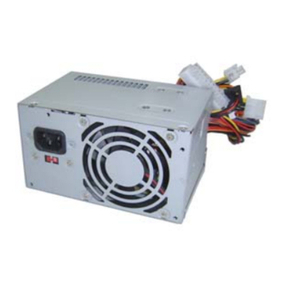
Delta Electronics
Delta Electronics DPS-250WB Specifications
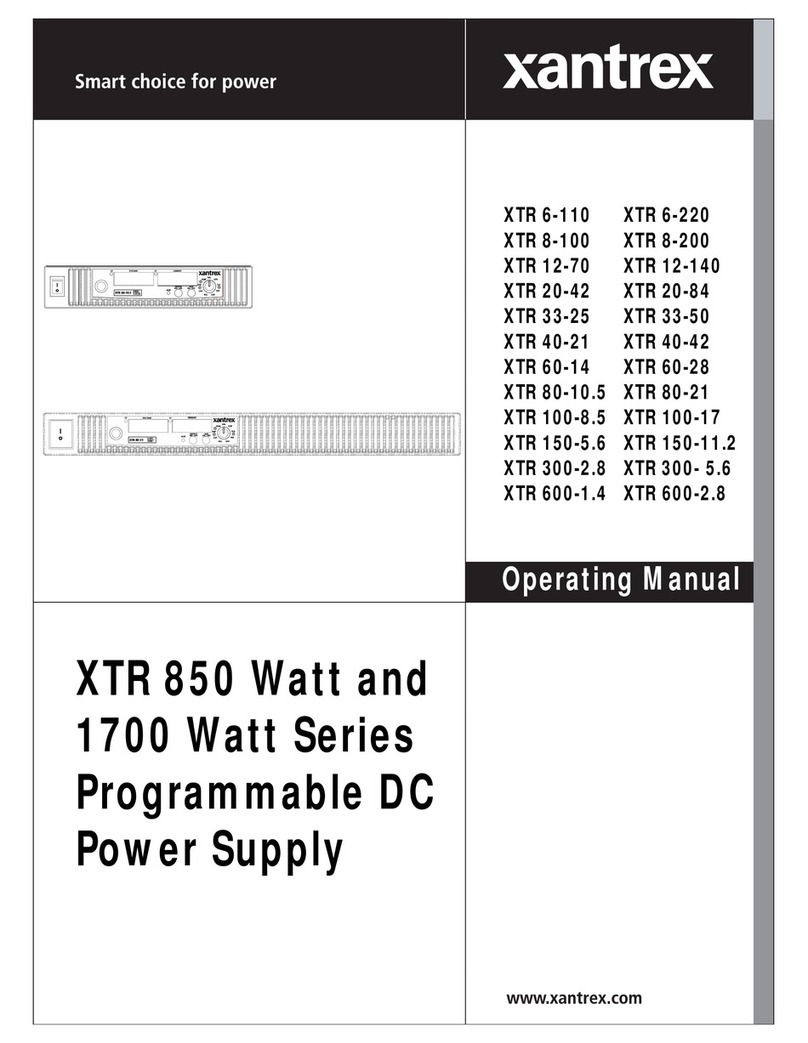
Xantrex
Xantrex XTR6-110, XTR8-100, XTR12-70, operating manual
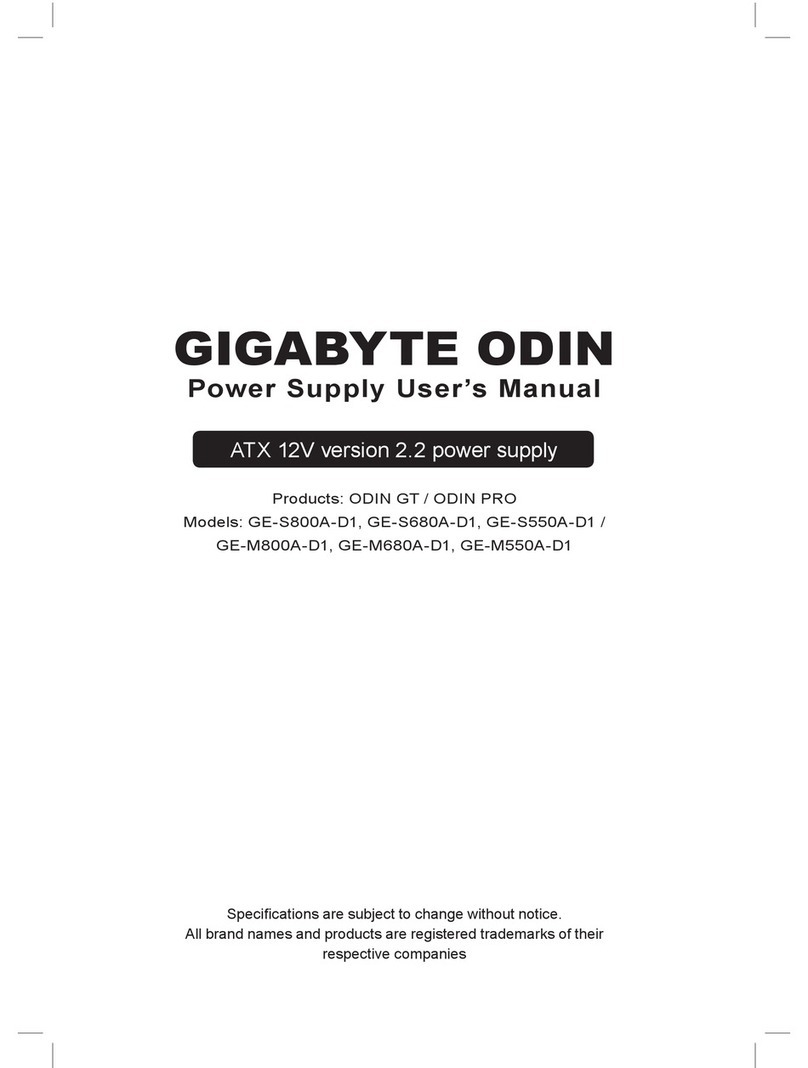
Gigabyte
Gigabyte ODIN GT GE-S800A-D1 user manual
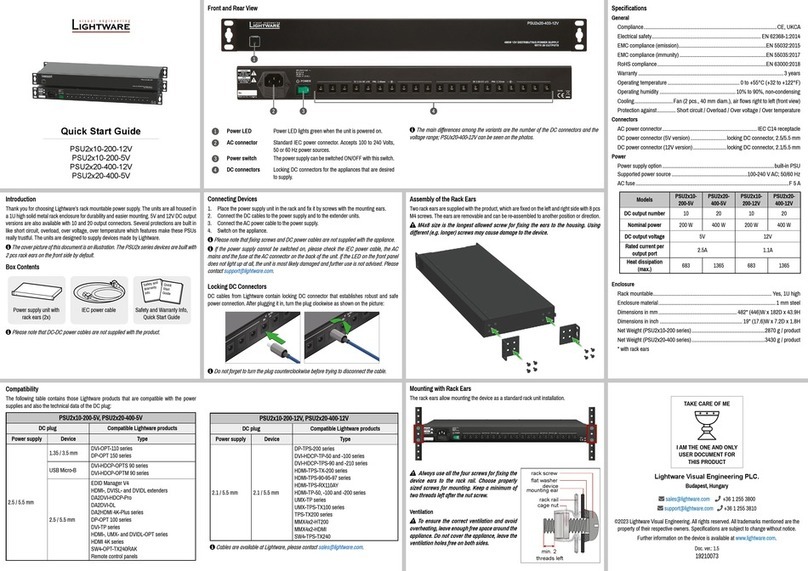
Lightware
Lightware PSU2x10-200-12V quick start guide
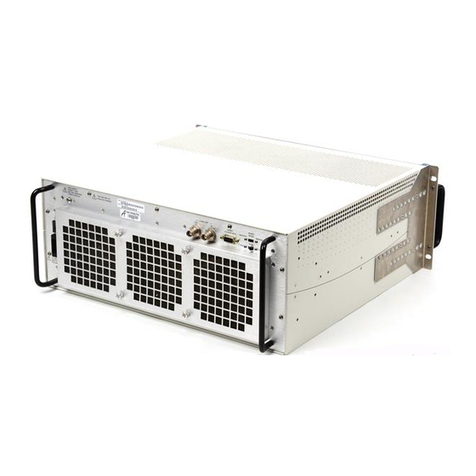
National Instruments
National Instruments PXI Express NI PXIe-1065 user guide

